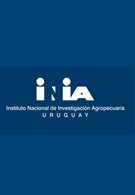Abstract:The aim of the present study was to evaluate the abundance and dynamics of white clover (WC) (Trifolium repens L.) under cattle grazing, in a stressful environment. To this end, we performed a 5-yr experiment in Buenos Aires province, Argentina, where treatments were low and high forage offers (LFO and HFO) of a tall fescue (TF) [Lolium arundinaceum Schreb. (Darbysh.)]?WC mixture and two sites regarding the initial existence of WC in the pasture (with and without white clover, WC+ and WC?). Climatic conditions determined periods of deficiency or abundance of plant available water in the topsoil, which interacted with the grazing management, leading to either the absence or richness of WC in the pasture. Before a drought, the basal cover of WC was 31.0 and 11.2% with LFO and HFO treatments, respectively (P

